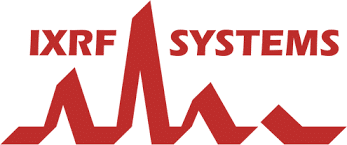IXRF: Putting X-ray Fluorescence Spectroscopy First
IXRF has carved a unique path for itself. Founded in 1993, the company is a dedicated provider of x-ray fluorescence (XRF) technology, specializing in small, affordable benchtop systems. But the company’s history lies in the use of XRF with scanning electron microscopy (SEM).
IXRF will be exhibiting at this week’s Pittcon conference, one of the largest shows for analytical instrumentation. IBO spoke with Mandi Hellested, the general manager of IXRF, about the company’s XRF technology and how it meets scientists’ needs.
Please describe how the company came to specialize in both microanalysis and XRF?
IXRF started in 1993 from a group of scientists, engineers and physicists that worked at the foremost XRF company of the time, Kevex. IXRF started as a small company upgrading Kevex systems and grew into a major player in the SEM/EDS [energy dispersive x-ray spectroscopy] market. Our expansion and innovation continued in 2004 when IXRF used our XRF knowledge and added XRF to the SEM, a novel approach at the time.
Through the years, IXRF has been a leader in industry by constantly expanding and improving our software. We are known for having the most advanced, yet user friendly software. Our most recent launch is our Atlas Micro-XRF unit, which is the most innovative benchtop micro-XRF unit on the market.
How does IXRF differentiate its XRF systems/technology from competitors’?
IXRF offers all the best, highest specifications a scientist could ever want with our Atlas Micro-XRF. We have the smallest XRF spot size of 5 µm and the largest area detectors at 150 mm2 . We can offer up to four detectors, which means incredibly fast elemental-map collection. In addition, we have the largest sample chambers and mapping area of any benchtop XRF unit.
Our large sample chamber means our customers can put some huge and sometimes crazy samples in the chamber. We’ve had giant slices of trees, large vases and even a tennis shoe in our chambers! To be more specific, our larger chamber unit, the Atlas X, can fully map a 300 mm wafer in one pass, with no need to deal with cutting the sample.
However, all of this hardware power is of no good to anyone if it isn’t supported by equally impressive software. Our Iridium Ultra software has a great variety of tools already built in, but if we come across a customer that needs a tool or feature we don’t offer, we are more than happy to add it.
It is because of our brilliant customers that we have the most powerful software on the market! Our customers are always coming to us with great ideas of tools to add to the software that will make their jobs easier and their data better. When we add these new tools all of our customers get them, as we are the only company that offers free software upgrades for the life of the system.
Your Atlas Micro-XRF unit is generating a lot of interest. Is there a particular market segment or application for which this system is especially suitable? Or from which it has attracted particular interest?
The Atlas Micro-XRF unit is incredibly versatile and can be an asset to many different types of laboratories. We have customers in university labs looking at everything from lake core samples to plant roots to metals and archaeological artifacts of all sorts. We have customers in the aerospace industry, forensics and geology, though I would say some of our biggest interest is coming from the semiconductor industry.
The semiconductor industry is tasked with non-destructively testing a huge variety of materials and features. As technology improves these features are getting smaller and smaller, which is where the Atlas can really be an asset with the 5 µm spot size. We are already working with some impressive names in the semiconductor industry and we are looking forward to expanding our presence.
Where do the future growth opportunities lie for SEM-EDX? For SEM-XRF? For Micro-XRF?
In general, the growth opportunities for the microanalysis industry lie with a company keeping up with the changes in the needs of the scientists. For IXRF this means continuing to do what we do best and listen to our customers and constantly improve our products, focus on adding new software tools, and being open to specialty requests for our instruments and technology.
IXRF has always kept our focus on microanalysis, this is all we do, so 100% of our time, energy, thought and passion goes into improving our products and supporting our customers. We don’t have 50 different product lines to worry about and scatter our focus.
We have some really exciting projects we are working on that will change the way people use and even think about XRF. Stay tuned!
Does IXRF work directly with SEM companies for such integrations or directly with customers?
Both! We love all the companies we serve! We have done, and have plans to do more, customized software and hardware projects with SEM companies as well as customers. We have great relationships with SEM companies that offer our EDS systems and XRF systems to their customers. We also have many customers that come directly to us for their EDS needs, be it for an upgrade of an older system or when they are ready for a new EDS for their new SEM.
Most of our customers have been with us for a long time, through the liquid nitrogen detector years and now into the SDD [silicon drift detectors] years. We have a large group of customers that have been with us for over 25 years! We like to think of them as family at this point.





